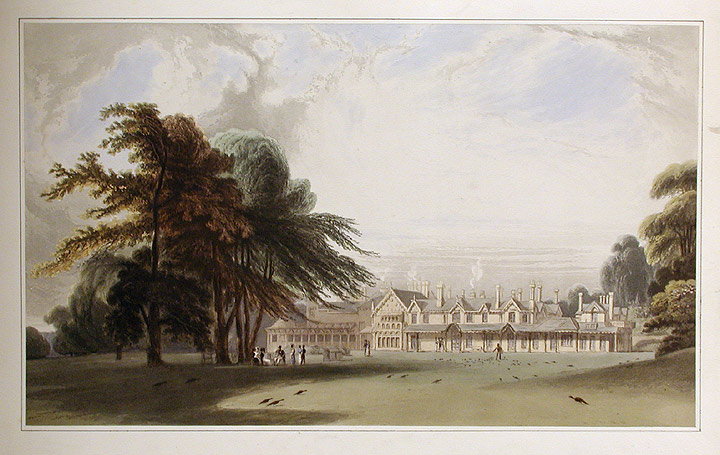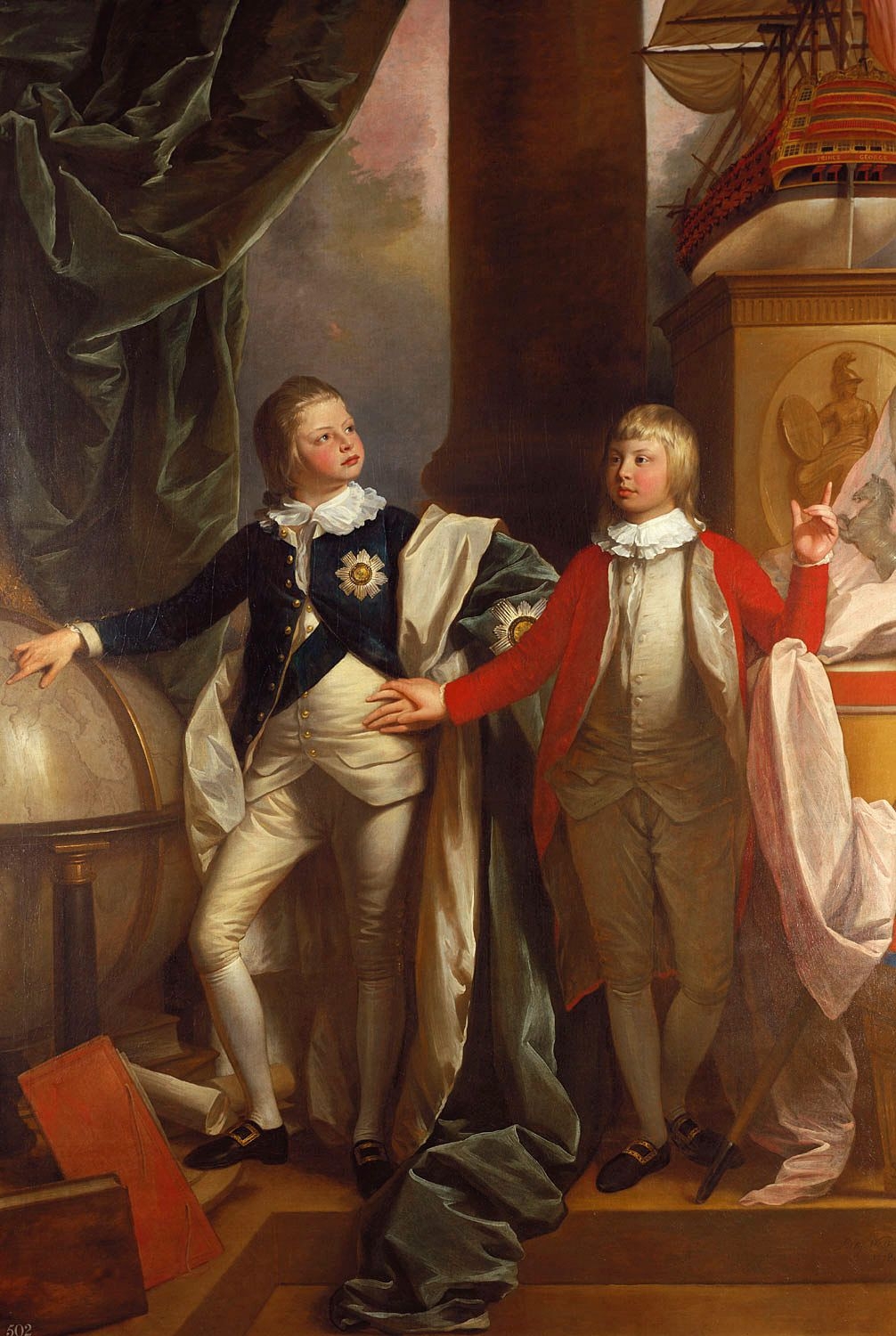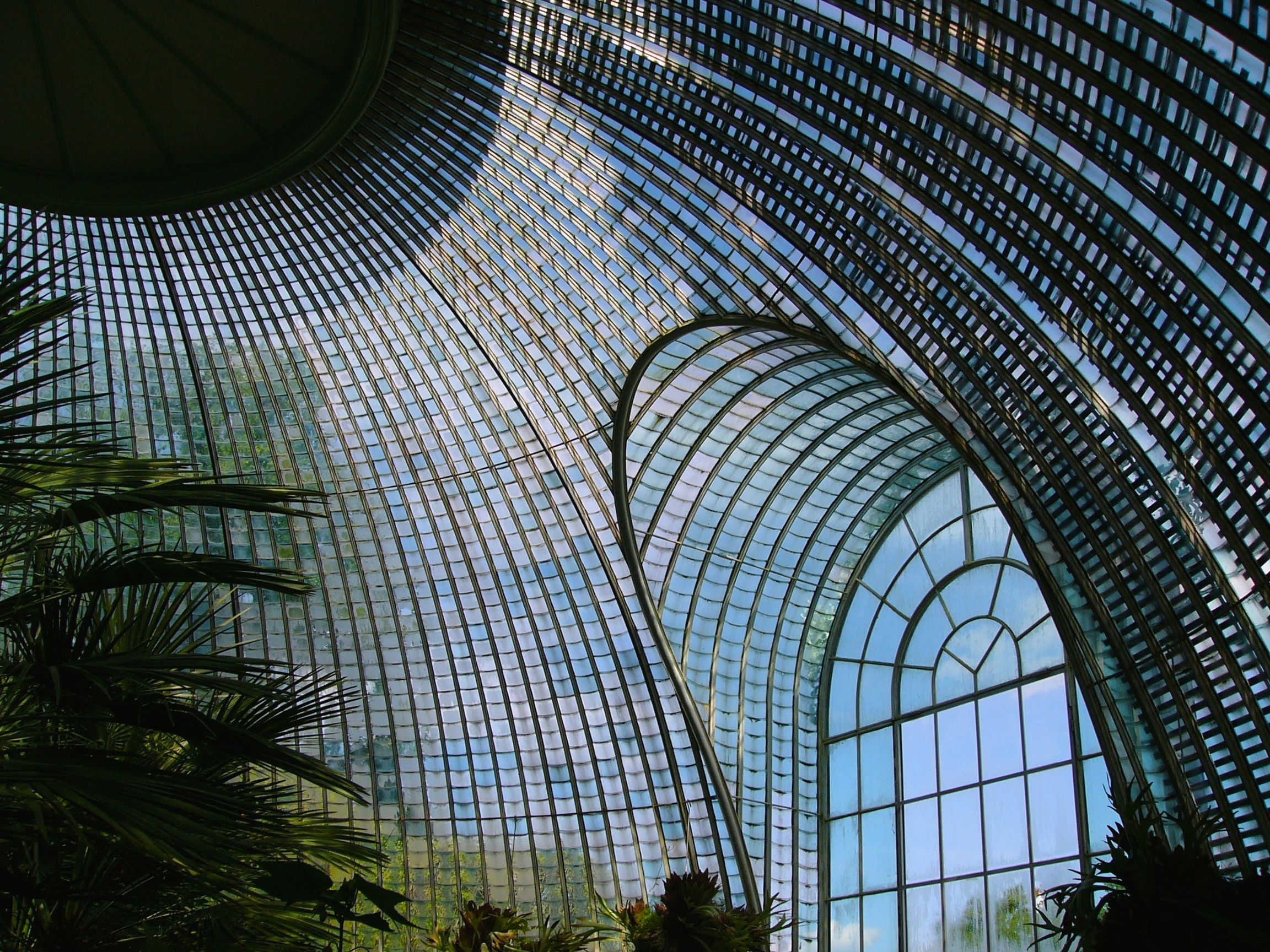|
Royal Lodge
Royal Lodge is a Grade II listed house in Windsor Great Park in Berkshire, England, half a mile north of Cumberland Lodge and south of Windsor Castle. The site of homes since the 17th century, the present structure dates from the 19th century, and was expanded in the 1930s for the then Duke of York, the future King George VI. Its central section consists of three storeys, with two-storey wings, totalling about 30 rooms, including seven bedrooms. The Royal Chapel of All Saints was built on the grounds in the 1820s. Part of the Crown Estate, it was the Windsor residence of Queen Elizabeth The Queen Mother from 1952 until her death in 2002 at the age of 101, after which it became the official country residence of Prince Andrew, Duke of York and his family in 2004. History Royal Lodge dates back to the mid-seventeenth century, with a house on the site by 1662. By 1750, the small Queen Anne style brick house was being used in conjunction with the adjacent dairy. By this ti ... [...More Info...] [...Related Items...] OR: [Wikipedia] [Google] [Baidu] |
Berkshire
Berkshire ( ; abbreviated ), officially the Royal County of Berkshire, is a Ceremonial counties of England, ceremonial county in South East England. It is bordered by Oxfordshire to the north, Buckinghamshire to the north-east, Greater London to the east, Surrey to the south-east, Hampshire to the south, and Wiltshire to the west. Reading, Berkshire, Reading is the largest settlement and the county town. The county has an area of and a population of 911,403. The population is concentrated in the east, the area closest to Greater London, which includes the county's largest towns: Reading (174,224), Slough (164,793), Bracknell (113,205), and Maidenhead (70,374). The west is rural, and its largest town is Newbury, Berkshire, Newbury (33,841). For local government purposes Berkshire comprises six Unitary authorities of England, unitary authority areas: Bracknell Forest, Borough of Reading, Reading, Borough of Slough, Slough, West Berkshire, Royal Borough of Windsor and Maidenhead ... [...More Info...] [...Related Items...] OR: [Wikipedia] [Google] [Baidu] |
Bailiff
A bailiff is a manager, overseer or custodian – a legal officer to whom some degree of authority or jurisdiction is given. There are different kinds, and their offices and scope of duties vary. Another official sometimes referred to as a ''bailiff'' was the '' Vogt''. In the Holy Roman Empire a similar function was performed by the '' Amtmann''. They are mostly known for being the officer that keeps the order in a court of law and who also administers oaths to people who participate in court proceedings. Britain and Ireland Historic bailiffs ''Bailiff'' was the term used by the Normans for what the Saxons had called a '' reeve'': the officer responsible for executing the decisions of a court. The duty of the bailiff would thus include serving summonses and orders, and executing all warrants issued out of the corresponding court. The district within which the bailiff operated was called his '' bailiwick'', and is even to the present day. Bailiffs were outsiders and free me ... [...More Info...] [...Related Items...] OR: [Wikipedia] [Google] [Baidu] |
Y Bwthyn Bach
' ("The Little Cottage") is a royal wendy house standing close to Royal Lodge within Windsor Great Park in England since 1932. History The two-thirds scale thatched cottage was a gift to Princess Elizabeth for her sixth birthday (later Queen Elizabeth II) from the people of Wales and placed in the grounds of Royal Lodge. Designed by architect Edmund Willmott as a Welsh-cottage style playhouse, it measures 24 feet long, eight feet deep and with a ceiling height of five feet. Built from materials left over from the redevelopment of Llandough Hospital, it has four rooms: kitchen; living room; and accessed via oak stairs a bedroom; and a bathroom. Services include full running hot and cold water, electricity and a heated towel rail in the bathroom. The kitchen has a working fridge, gas cooker and a miniature blue and white porcelain dining and tea set. In the living room is a working miniature radio, a little oak dresser, a bookcase filled with Beatrix Potter's books, and a pictu ... [...More Info...] [...Related Items...] OR: [Wikipedia] [Google] [Baidu] |
George V
George V (George Frederick Ernest Albert; 3 June 1865 – 20 January 1936) was King of the United Kingdom and the British Dominions, and Emperor of India, from 6 May 1910 until Death and state funeral of George V, his death in 1936. George was born during the reign of his paternal grandmother, Queen Victoria, as the second son of the Prince and Princess of Wales (later King Edward VII and Queen Alexandra). He was third in the line of succession to the British throne behind his father and his elder brother, Prince Albert Victor. From 1877 to 1892, George served in the Royal Navy, until his elder brother's unexpected death in January 1892 put him directly in line for the throne. The next year Wedding of Prince George and Princess Victoria Mary, George married his brother's former fiancée, Princess Victoria Mary of Teck, and they had six children. When Death of Queen Victoria, Queen Victoria died in 1901, George's father ascended the throne as Edward VII, and George was created ... [...More Info...] [...Related Items...] OR: [Wikipedia] [Google] [Baidu] |
Eric Savill
The Savill Garden is an enclosed part of Windsor Great Park in England, created by Sir Eric Savill in the 1930s. It is managed by the Crown Estate and charges an entrance fee. The garden includes woodland, ornamental areas and a pond. The attractions include the New Zealand Garden, the Queen Elizabeth Temperate House and trees planted by members of the Royal Family. In June 2010, a new contemporary rose garden designed by Andrew Wilson and Gavin McWilliam of Wilson McWilliam Studio was opened by Queen Elizabeth II. Eric Savill (1895–1980) was the grandson of Alfred Savill the founder of a large firm of estate agents and was involved in managing Windsor Great Park from 1930 to 1970, being Director of Gardens from 1962 to 1970. He opened the Savill Garden to the public in 1951 and left it as a heritage to the nation. In June 2006, a specially designed new visitor centre A visitor center or centre (see American and British English spelling differences), visitor informat ... [...More Info...] [...Related Items...] OR: [Wikipedia] [Google] [Baidu] |
Crown Estates
The Crown Estate is a collection of lands and holdings in the United Kingdom belonging to the British monarch as a corporation sole, making it "the sovereign's public estate", which is neither government property nor part of the monarch's private estate. The Crown Estate in England, Wales, and Northern Ireland is managed by the Crown Estate Commissioners, which trades as The Crown Estate. In Scotland, the Crown Estate is managed by Crown Estate Scotland, since the Scottish estate was devolved in 2017. The sovereign has official ownership of the estate but is not involved with its management or administration; nor does the sovereign have personal control of its affairs. For all practical purposes, the Estate Commissioners shall exercise "all such acts as belong to the Crown's rights of ownership" for the Estate "on behalf of the Crown". The proceeds of the Estate, in part, fund the monarchy. The estate's extensive portfolio is overseen by a semi-independent, incorporated public ... [...More Info...] [...Related Items...] OR: [Wikipedia] [Google] [Baidu] |
National Audit Office (United Kingdom)
The National Audit Office (NAO) is an independent Parliamentary body in the United Kingdom which is responsible for auditing central government departments, government agencies and non-departmental public bodies. The NAO also carries out value for money (VFM) audits into the administration of public policy. Function The NAO is the auditor of bodies funded directly by the Parliament of the United Kingdom. The NAO reports to the Comptroller and Auditor General who is an officer of the House of Commons of the Parliament of the United Kingdom and in turn reports to the Public Accounts Commission, a statutory body established under section 2 of the National Audit Act 1983. The reports produced by the NAO are reviewed by the Public Accounts Committee, a select committee of the House of Commons, and in some cases investigated further. The NAO has two main streams of work: Financial Audits and Value For Money (VFM) audits. The NAO's financial audits give assurance over three as ... [...More Info...] [...Related Items...] OR: [Wikipedia] [Google] [Baidu] |
William IV
William IV (William Henry; 21 August 1765 – 20 June 1837) was King of the United Kingdom of Great Britain and Ireland and King of Hanover from 26 June 1830 until his death in 1837. The third son of George III, William succeeded his elder brother George IV, becoming the last king and penultimate monarch of Britain's House of Hanover. William served in the Royal Navy in his youth, spending time in British North America and the Caribbean, and was later nicknamed the "Sailor King". In 1789, he was created Duke of Clarence and St Andrews. Between 1791 and 1811, he cohabited with the actress Dorothea Jordan, with whom he had ten children. In 1818, he married Princess Adelaide of Saxe-Meiningen; William was not known to have had mistresses during their marriage. In 1827, he was appointed Britain's Lord High Admiral of the United Kingdom, Lord High Admiral, the first since 1709. As his two elder brothers died without leaving Legitimacy (family law), legitimate issue ... [...More Info...] [...Related Items...] OR: [Wikipedia] [Google] [Baidu] |
Conservatory (greenhouse)
A conservatory is a building or room having glass or other transparent roofing and walls, used as a greenhouse or a sunroom. Usually it refers to a space attached to a conventional building such as a house, especially in the United Kingdom. Elsewhere, especially in America, it can often refer to a large freestanding glass-walled building in a botanic garden or park, sometimes also called a palm house if tall enough for trees. Municipal conservatories became popular in the early 19th century. Description Many cities, especially those in cold climates and with large European populations, have built municipal conservatories to display tropical plants and hold flower displays. This type of conservatory was popular in the early nineteenth century, and by the end of the century people were also giving them a social use (e.g., tea parties). Conservatory architecture varies from typical Victorian glasshouses to modern styles, such as geodesic domes. Many were large and impressive ... [...More Info...] [...Related Items...] OR: [Wikipedia] [Google] [Baidu] |
Cottage Orné
dates back to a movement of "rustic" stylised cottages of the late 18th and early 19th centuries during the Romantic movement, when some sought to discover a more natural way of living as opposed to the formality of the preceding Baroque and Neoclassical architectural styles. English Heritage defines the term as "A rustic building of picturesque design." Cottages ornés often feature well-shaped thatch roofs with ornate timberwork. England In England cottage orné were often built by the landed wealthy either as rustic retreats for themselves or as embellishments for their estates. They were not necessarily cottages in the usual sense of a small dwelling for the rural poor: examples range from the cluster of retirement cottages built by a Bristol banker for his retired staff at Blaise Hamlet to the expansive Royal Lodge, built by king George IV for his own use. Houghton Lodge, Hampshire, is a fine example with beautiful gardens. The cottage orné is the archetypal " chocolate ... [...More Info...] [...Related Items...] OR: [Wikipedia] [Google] [Baidu] |
Jeffry Wyatville
Sir Jeffry Wyatville (3 August 1766 – 18 February 1840) was an English architect and garden designer. Born Jeffry Wyatt into an established dynasty of architects, in 1824 he was allowed by King George IV to change his surname to Wyatville (frequently misspelled Wyattville). He is mainly remembered for making alterations and extensions to Chatsworth House and Windsor Castle. Life Jeffry Wyatt was born on 3 August 1766 in Burton upon Trent, the first surviving child of Joseph (1739–1785) and Myrtilla Wyatt, who died shortly after Jeffry's birth. He was educated at the grammar school in Burton upon Trent. Shortly after the death of his father, Wyatville began his architectural training in his uncle Samuel Wyatt's office. He remained with Samuel until 1792 when he moved from the Midlands to his uncle James Wyatt's office in Queen Anne Street, London. He later completed the gothic Ashridge in Hertfordshire after his uncle James's death in 1813. Wyatville sent designs to the ... [...More Info...] [...Related Items...] OR: [Wikipedia] [Google] [Baidu] |




